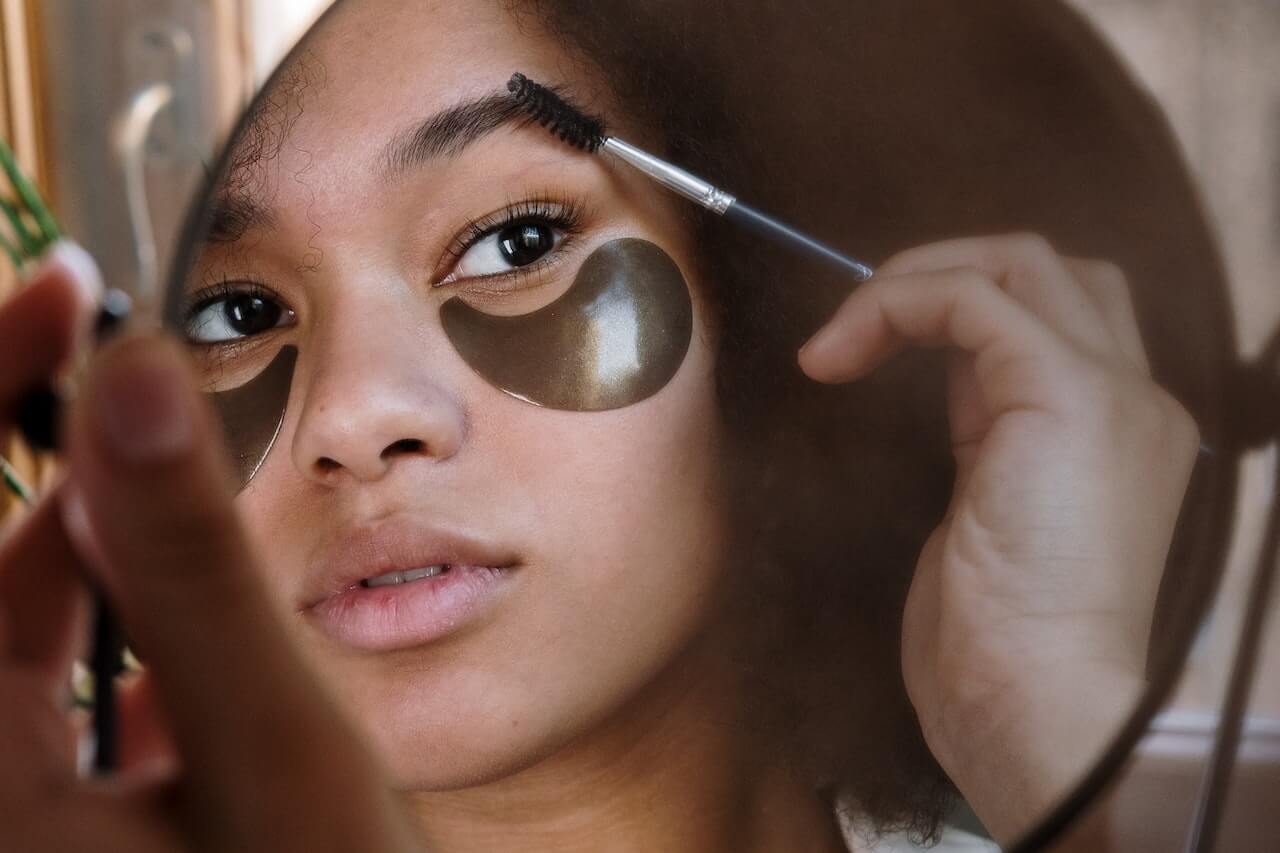Exfoliation is one of the best things you can do for your skin. Just like the skin on your face, your scalp contains sebaceous glands that produce oil (sebum). Even if you don’t suffer from dandruff, your hair wellness can be greatly impacted if it’s not getting a thorough exfoliation every week. Exfoliating the scalp regularly can keep it healthier in the long run, preventing issues from cropping up and improving the look of hair.
Additionally, your scalp is pretty important when it comes to your hair growth — and that’s an understatement. Your scalp contains about 100,000 hair follicles from which each strand of your hair grows. Without a healthy scalp — and healthy hair follicles — strong hair growth and retention is extremely challenging. For those of us who struggle with hair growth, whether you have dry, oily or normal hair, scalp exfoliation could be the missing link in achieving overall hair wellness. Plus, learn more about the best scalp products for you.
#include-related-slider#
What Are the Benefits of Scalp Exfoliation?
Similarly to exfoliating your face, exfoliating your scalp helps remove dead skin cells and other debris, such as buildup of excess oil and leftover hair care products, which can clog hair follicles and inhibit hair growth. Product buildup can also weigh your hair down, preventing you from getting a lot of volume in your hairstyle.
Exfoliating your scalp can help clear away dead skin cells and buildup to encourage healthy new cells, as well as unclog and prevent clogged hair follicles. Since clogged hair follicles can cause inflammation — which hinders hair growth — this is definitely something you should address.
Another one of the benefits of scalp exfoliation for hair growth is that you’re basically giving your head a massage. Regular scalp massages have many benefits due to an increase in blood circulation, which can help deliver more nutrients to your scalp and help improve hair thickness and growth.
Shop: GRO Balance & Restore Kit
Who Should Exfoliate Their Scalp?
A healthy scalp is the foundation for healthy hair. Everyone can benefit from scalp exfoliation every now and then as we all experience buildup of dead skin cells and product. But more frequent and regular scalp exfoliation could be particularly beneficial for people who:
- Use a lot of hair products
- Have really dry or really oily hair
- Are seeing poor hair growth or are experiencing hair loss
- Experience dandruff or flakiness
However, people who have any open wounds on their scalp or an infection like ringworm should avoid exfoliation until the problem is cleared up. Remember, you never want to exfoliate open wounds!
So how can you tell if your scalp isn't as healthy as it could be? It may be tight, itchy, flaky, uncomfortable, red or unusually greasy or dry. Scalp health requires a comprehensive approach — it’s just as much about what you eat as it is about protecting your scalp from the sun, using the right products and now, your new BFF, exfoliation. As always, it’s important to consult your dermatologist if you suffer from severe scalp issues or excessive dandruff before making any changes to your regimen as you may require prescription-strength products or professional treatment.
related: How to Completely Get Rid of Dandruff
How to Exfoliate Your Scalp
To experience the freshest, healthiest scalp — and the impressive hair benefits that come with it — follow these steps to learn how to properly exfoliate your scalp:
Step 1: Apply a Scalp Serum
To start your scalp exfoliation process, apply a scalp serum directly to your scalp on dry hair before showering. There are plenty of scalp serums on the market, and the VEGAMOUR GRO Detoxifying Scalp Serum is one of the most powerful, effective formulas around. To use, simply part dry hair into even sections, apply the serum and actively massage it into your scalp for one to two minutes with your fingers or a scalp massager. Leave the serum on for up to ten minutes and then rinse it out and wash your hair as desired. To maximize results, we recommend using the scalp serum once a week.
Step 2: Lightly Exfoliate With a Scalp Brush or Massager
Whether you're using a scalp serum or just washing your hair as usual, prepare your scalp by lightly exfoliating before jumping in the shower. To begin, take your paddle brush and lightly (this is key, as too much pressure can cause more issues than it solves) buff away at the scalp. This motion will loosen up any dead skin cells and prepare for the actual scrub and rinse in the shower. We recommend using a scalp exfoliation brush with gentle bristles like rubber or nylon because they are especially made to stimulate blood flow, reduce tangles and exfoliate the scalp.
Another great option is a handheld scalp massager which includes rows of rubber bristles that stimulate the scalp and boost circulation — plus, they feel pretty amazing to use, particularly after you’ve had a long, stressful day. Convenient and calming, these petite tools are highly versatile, since they can be paired with hair serums and your favorite shampoos.
Another perk? There’s been reports of scalp massages possibly promoting hair growth, and there’s the science to back up the claims. In a 2016 study, regular scalp massages lead to thicker hair after massaging for about four minutes per day over a 24 week period.
Read: Why You Should Pay Close Attention to Your Scalp
Step 3: Use a Clarifying Shampoo
Another helpful step in your routine can be using a clarifying shampoo as needed or up to once a week. Opt for formulas with oil- and impurity-removing ingredients such as charcoal powder, citrus extracts, rosemary leaf, tea tree oil and witch hazel. Your hair and scalp should both be left feeling fresh and renewed immediately afterward. Clarifying shampoos can help remove product and dead skin cell buildup, but using them too frequently can strip your hair of the natural oils it needs to be healthy and shiny so use them as needed. Clarifying shampoos can also be paired with a scalp massage for extra circulation. Always use conditioner after since clarifying shampoos can leave your hair feeling dry.
Shop: GRO Biotin Gummies 3-Pack
Chemical vs. Physical Scalp Exfoliation
Similar to your skin, there are two kinds of exfoliation: chemical exfoliation (think of a glycolic peel) and physical exfoliation (think of your favorite sugar scrub). While chemical exfoliation uses a chemical or enzymes to help remove debris, physical exfoliation requires you to actually scrub your scalp with a mildly abrasive surface or substance, such as sea salt, sugar, coffee, clay, your fingers or a handheld scalp massager. Both types of exfoliation have their benefits and may have a place in your routine depending on your needs. Make sure to pay attention to what works best for you.
So which one is right for you? Chemical exfoliants can help people with sensitive and dry skin, but in general, physical exfoliants might be better picks for those with sensitive or irritated scalps. Oily skin can benefit from either physical or chemical exfoliants, especially ones with a detoxifying base such as clay or charcoal. With a little trial and error you can figure out which scalp exfoliation methods and frequency work best for you.
Read: Can Seborrheic Dermatitis Cause Hair Loss?
Chemical Scalp Exfoliation
Chemical exfoliation can be done by applying an alpha hydroxy acid (AHA) such as glycolic acid or beta hydroxy acid (BHA) such as salicylic acid directly to your scalp, focusing on your problem areas. Leave it on for up to 10 minutes before you wash your hair in the shower, but always rinse it out quickly if you experience stinging or discomfort. Acids can make your skin sensitive to light and since you can't exactly put sunscreen on your scalp, it's best to only use chemical exfoliants on your scalp no more than once every one or two weeks or on an as-needed basis and wear a hat for sun protection.
Chemical exfoliation might be too harsh for some users. In that case, use a detoxifying scalp serum instead. This weekly clarifying treatment can reduce buildup on the scalp and encourage healthy hair growth without the irritation of harsher products. The GRO Scalp Detoxifying Serum can eradicate the hyper proliferation of dandruff-causing fungi to promote a reduction of sebum production of up to 58% reduction in 15 days.
Learn: How to Best Apply VEGAMOUR Hair Serums
Physical Scalp Exfoliation
For dry and sensitive skin, a DIY brown sugar-based scalp scrub can be beneficial but a salt scalp scrub may be too harsh. Dry and sensitive skin types may also want to go with an oil-based exfoliant, as the oil can help keep your scalp moisturized, and act to make the exfoliant itself more gentle on skin. In fact, some research indicates that oil — particularly coconut oil — can help prevent protein loss in hair.
#include-related-slider#
Find The Best Scalp Exfoliation Routine For You
Just like with your haircare and skincare routines, how you care for your scalp will take some trial and error to figure out what products, techniques and frequencies work best for your unique needs. Pay attention to what works (or doesn't work) for you and adjust as needed to find a regular scalp routine you can rely on. You'll be on your way to achieving hair wellness in no time.
More From VEGAMOUR
- Learn: Why Millions of Women Love GRO Hair Serum
- Should You Be Using a Clarifying Shampoo?
- 6 Signs You Need a Scalp Detox (And How to Do It Right)
Photo credit: Aizhana Aldanova/Pexels
Back


















